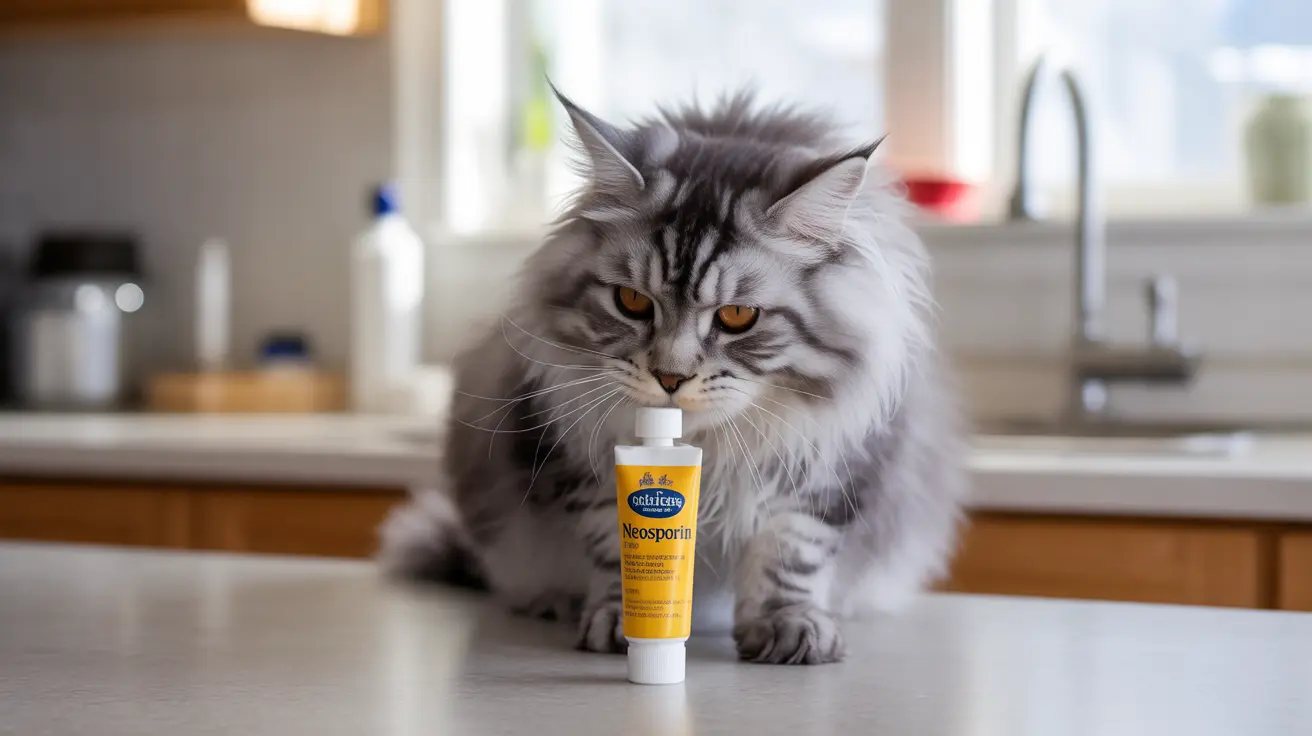If you're wondering whether you can put Neosporin on a cat, the short answer is no. While this common human antibiotic ointment is readily available in most medicine cabinets, veterinarians strongly advise against using it on cats due to significant health risks and potential toxicity.
In this comprehensive guide, we'll explore why Neosporin isn't safe for cats, what dangers it poses, and what alternatives you should use instead for feline wound care.
Understanding Why Neosporin Is Dangerous for Cats
Neosporin contains three antibiotics - bacitracin, neomycin, and polymyxin B - that can trigger severe allergic reactions in cats. Unlike humans, cats have unique physiological characteristics that make them especially sensitive to these ingredients.
The biggest concern is that cats naturally groom themselves, meaning they'll likely ingest any topical medication applied to their skin or fur. This can lead to serious systemic reactions and toxicity.
Common Signs of Neosporin Toxicity in Cats
If your cat has been exposed to Neosporin, watch for these warning signs:
- Skin irritation and redness
- Excessive scratching
- Vomiting and diarrhea
- Swelling, especially around the face
- Difficulty breathing
- Lethargy or weakness
- Increased drooling
- Loss of appetite
Safe Alternatives for Cat Wound Care
Instead of reaching for Neosporin, consider these veterinarian-approved options:
- Gentle cleaning with warm water and mild soap
- Veterinary-prescribed antibiotic ointments specific for cats
- Professional wound cleaning and treatment
- Cat-specific antimicrobial sprays recommended by your vet
When to See a Veterinarian
Any wound on your cat should be evaluated by a veterinarian, especially if you notice:
- Deep cuts or punctures
- Signs of infection (pus, swelling, warmth)
- Wounds that won't stop bleeding
- Changes in your cat's behavior or appetite
- Signs of pain or discomfort
Frequently Asked Questions
Can you safely put Neosporin on a cat's wound?
No, Neosporin should not be used on cats. The ingredients can cause severe allergic reactions and toxicity, especially if ingested through grooming.
What are the risks of putting Neosporin on a cat's skin or wound?
Risks include allergic reactions, skin irritation, systemic toxicity if ingested, and potentially life-threatening anaphylaxis. Cats are particularly sensitive to the ingredients in Neosporin.
What should I do if my cat licks or ingests Neosporin?
Contact your veterinarian immediately. Monitor your cat for signs of toxicity such as vomiting, diarrhea, lethargy, or difficulty breathing. These symptoms require immediate medical attention.
What are the best safe alternatives to Neosporin for treating cat wounds?
The safest approach is to have wounds evaluated by a veterinarian who can prescribe appropriate cat-specific medications. For minor cuts, gentle cleaning with warm water and mild soap is safe until you can see a vet.
Why is Neosporin not recommended for eye infections or open wounds in cats?
Neosporin can cause severe reactions in cats' eyes and may lead to vision problems or blindness. For open wounds, the risk of ingestion through grooming makes it dangerous, as the ingredients can cause systemic toxicity.
Conclusion
While it might be tempting to treat your cat's wounds with readily available human medications like Neosporin, doing so can put your pet at serious risk. Always consult with your veterinarian for proper wound care and use only prescribed medications specifically formulated for cats.
Remember, when it comes to your cat's health, it's better to be safe than sorry. A quick vet visit can prevent serious complications and ensure your feline friend receives the most appropriate and safest treatment for their condition.






